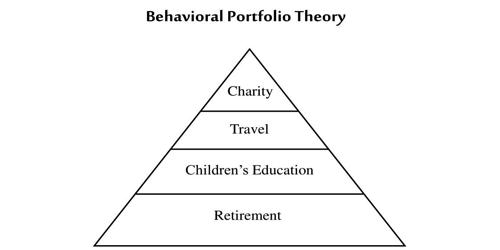Bank credit:
The Bank Creditand Commerce International was a major international bank founded in 1972 by Agha Hasan Abedi, a Pakistanifinancier.The Bank was registered in Luxembourg with head offices in Karachi and London. Within a decade BCCI touched its peak. It operated in 78 countries, had over 400 branches, and had assets in excess of US$20 billion, making it the 7th largest private bank in the world by assets.The principle reason banks is chartered is to make loans to their customers, banks are expected to support their local communities with an adequate supply of credit for all legitimate business and customer financial needs and to price that credit reasonably in line with competitively determine interest rates. Indeed, making loan is the principle economic function of the banks-to fund consumption and investment spending by businesses, individuals and units of government. How well a bank performs its lending function has a great deal to do with the economic health of its region, because bank loan support the growth of new business and jobs within the bank’s trade territory and promote economic vitality. Moreover, bank loans often seem to convey positive information to the marketplace about a borrower’s credit quality, enabling a borrower to obtain more and perhaps somewhat cheaper funds from the sources.
Types of loan made by banks:
Bank loans may be divided into seven broad categories of loans, delineated by their purposes:
- Real Estate loan: REL, which are secured by real property-land, buildings and other structures and which includes short term loans for construction and land development and longer term loans to finance the purpose of farmland, homes, apartments, commercial structure and foreign properties.
- Financial institution loans: FIL includes credit to bank, insurance companies, finance companies and other financial institution..
- Agricultural loans:AL extended to farm and ranch operation to assist in planting and harvesting crops and to support the feeding and care of livestock.
- Commercial and industrial loans: C & IL granted to business to cover such expenses as purchasing inventories, paying taxes and meeting payrolls.
- Loans to individuals: Loans to individuals, including credit to finance the purchase of automobiles, mobile homes, appliances and other retail to repair and modernize homes, cover the cost the medical care and other personal expenses, either extended directly to individuals or indirectly through retail dealers.
- Miscellaneous loans: ML, which includes all those loans not classified here, including securities’ loan.
- Lease financing receivables, where the bank buys equipment of vehicles and lease them to its customers.
Factors determining the growth and mix of bank loans:
Characteristics of the market area: One of the key factors in shaping an individual bank’s loan portfolio is the profile of characteristics of the market area it serves. Each bank must respond to the particular demands for credit rising from customer in its own market. A bank serving a suburban community with large number of single family home and small retail stores will normally have mainly residential real estate loans, automobile loans, and credit for the purchase of home appliances and for meeting household expenses. In contrast, a bank situated in a central city surrounded by office buildings, department stores and manufacturing establishments will typically devote the bulk of its loan portfolio to business loan designed to stock shelves with inventory, purchase equipment and meet payrolls. Of course, banks are not totally depending on the local areas they serve for all the loans they acquire. They can purchase whole loans or prices of loans from other banks, shares in loans with other banks (known as participants) or even use credit derivatives to offset the economic volatility inherent in loans for their trade territory. These steps can help to reduce the risk of loss if the local areas served by the bank incur severe economic problems.
Bank size: Bank size is also a key factor shaping the composition of the bank’s capital, which determines its legal lending limit to single borrowing customer. Larger banks typically are wholesale lenders, devoting the bulk of their credit portfolio to large domination loans to corporations and other business firms. Smaller loans, on the other hand, tend to emphasize retail credit; in the form of smaller-denomination personal cash and investment loans and homes mortgage loans extended to individuals and families, as well as smaller business loans to firms and ranches. The smaller banks are more heavily committed to real estate and a agricultural loans compared to the largest banking firms, which are more heavily committed to commercial loans.
Experience and expertise of management: The experience and expertise of management in making different types of loans also shape a bank’s loan portfolio mix, as does the bank’s official loan policy, which prohibits its loan officers from making certain kinds of loans.
Expected yield: Loan mix at any particular bank depends heavily as well as upon the expected yield to the bank that each loan offers compared t6o the yields on all other asset s the bank could acquire. Other factors held equal, a bank would generally prefer to make loans bearing the highest expected returns after all expenses and the risk of loan losses are taken into account. One way banker can assess this yield versus cost factor is to set up a cost accounting system that considers all expected revenues along with the direct and indirect cost of making each type of loan. As a general rule, a bank should make those type of loans for which it is the most efficient producer.
Establishing a written policy of bank loan:
One of the most important ways a bank makes sure its loans meet regulatory standards and are profitable is to establish a written loan policy. Such a policy gives loan officers and the bank’s management specific guidelines in making individual loan decisions and in shaping the bank’s overall loan portfolio. The actual makeup of a bank’s portfolio should reflect what its loan policy says. Otherwise the loan policy is not functioning effectively and should be either revised or more strongly enforced by senior management.
The most important elements of a good “bank loan policy” include:
- A global statement for the bank’s loan portfolio (i.e. statement of the characteristics of a good loan portfolio for the bank in terms of types, maturities, sizes and quality of loans).
- Specification of the lending authority given to each loan officer and loan committee (measuring the maximum amount and types of loan that each person and committee can approve and what signature are required).
- Lines of responsibility in making assignments and reporting information within the loan department.
- Operating procedures for soliciting, reviewing, evaluating and making decisions on customer loan applications.
- The required documentation that is to accompany each loan application and what must be kept in the bank’s credit files (required financial statements, security agreements etc).
- Guidelines for talking, evaluating and perfecting loan collateral.
- Lines of authority within the bank, detailing who is the responsible for maintaining and reviewing the bank’s credit files.
- A presentation of policies and procedures for setting loan interest rates and fees and the terms for repayment of loans.
- A statement of quality standards applicable to all loans.
- A statement of the preferred upper limits for total loans outstanding (i.e. the maximum ratio of total loans total assets allowed).
- 29A decision of the preferred procedures for detecting, analyzing and working out problem loan situations.
The advantages of written loan policy are that, it communicates to employees working in the loan department, what procedures they must follow and what their responsibilities are. It helps the bank move toward a loan portfolio that can successfully blend multiple objectives, such as promoting the bank’s portfolio, controlling its risk exposure and satisfying regulatory requirements. While any written loan policy must be flexible due to continuing changes in economic conditions and regulations, violations of a bank’s loan policy should be infrequent events.
Credit analysis: What makes a good loan?
The division of the bank responsible for analyzing and making recommendations on the fate of most loan applications is the credit department. Experience has shown that this department must satisfactorily answer three major questions regarding each loan application:
- Is the borrower credit worthy? How do you know?
- Can the agreement be properly structured and documented so that the bank and its depositors are adequately protected and the customer has a high probability of being able to service the loan without excessive strain?
- Can the bank perfect its claim against the assets or earnings of the customer so that, in the event of default, bank funds can be recovered rapidly at low cost and with low risk?
Risk factors of Loans & Advances:
Before loan settlement the bank must carefully remember the risk factors. The following situation and circumstances may tell upon the company’s performance. The bank can consider the factors before settle of loan.
a) Unforeseen situations and circumstances leading to bad investment.
b) Sudden change in social economic environment.
c) Continued political unrests leading to disruption in banking business.
d) Banking sector particularly nationalized commercial bank have 40% bad loan but in private sector bank this rate comparatively lower at present. In this event if investment turns bad this percentage go up therefore bear risk.
e) The bank should not encourage any hi-tech project or in any such project which involves technological risk.
f) In the event of introduction of any new laws or regulations by any regulatory body of the country may leads to risk.
g) Potential changes in global or national policy may impose risk.
Bank’s sources of credit information:
- 1. Personal interview
- 2. Financial statement
- 3. Bank’s own record
- 4. Market report
- 5. Credit information bureau
- Other sources
Factors influencing the commercial bank’s credit policy:
- Capital position of the bank
- Earning requirements
- Stability of deposits
- Experience and efficiency of the bank personnel
- Credit needs of the area served.
Features of good securities:
- Acceptability
- Ability
- Marketability
- Liability free
- Transferability
- Stability of price
- Liquidity
- Quality of the assets.
A few usual securities against banker’s advances:
- Immoveable properties
- Personal securities
- Goods and products as securities
- Marketable securities
- Documents:
- i. The main deed or the certificate copy with receipt of the land/property.
- ii. C.S, S.A, R.S khatiyan.
- iii. Non-encumbrances certificate.
- iv. Approval plan of the building that will establish on the land.
- v. Evaluation certificate of the property from the related authority.
- vi. Memorandum of deposit or title deeds.
- vii. Confirmation letter of ownership of the property from “appointed lawyer” of the bank.
- viii. Valuable goods.
- ix. Others.
Limitation on the creation of credit of commercial bank:
- Lack of available cash
- Lack of deposits
- Tendency of protect in cash
- Decrease in public savings
- Habit of customer
- Amount of initial deposits
- Credit control policy of central bank
- Condition of the business
- Influence of bad debts
- Special situations.
Handling loan problem situations:
Inevitably, despite the safeguards most bank build into there lending programs, some loans on a bank’s books will become problem loans. Usually this means the borrower has missed one or more promised payments or the collateral pledge behind a loan has declined significantly in value. Which each problem loan situation is somewhat different, several features common to most such situation should warn a banker that troubles have set in:
- Unusual or unexplained delays in receiving promised financial reports and payments or in communicating with bank personnel.
- For business loans, any sudden change in methods used by the borrowing firm to account for depreciation, make pension plan contributions, values inventories, account for taxes or recognized income.
- For business loans, restructuring outstanding debt or eliminating dividends, or experiencing a change in the customer’s credit rating.
- Adverse changes in the price of a borrowing customer’s stock.
- Net earnings losses in one or more years, especially as measured by returns on the borrower’s assets (ROA), or equity capital (ROE), or earnings before interest and taxes (EBIT).
- Averse changes in the borrower’s capital structure (equity/debt ratio), liquidity (current ratio) or activity levels (e.g., the ratio of sales to inventory).
- Deviations of actual sales or cash flow from those projected when the loan was requested.
- Sudden, unexpected, and unexplained changes in deposit balances maintained by the customer.
The processes of recovering the bank’s fund from a problem loan situation:
- Bankers must always keep the goal of loan workouts firmly in mind: to maximize the bank’s chances for the full recover of its funds.
- The rapid detection and reporting of any problems with a loan are essential; delay often worsens a problem loan situation.
- The loan workout responsibility should be separate from the lending function to avoid possible conflicts of interest for the loan officer.
- Estimate what resources are available to collect the trouble loan, including the estimated liquidation values of assets and deposits.
- Loan workout personnel should conduct a tax and litigation search to see the borrower has other unpaid obligations.
- Foe business borrowers, bank loan personnel must evaluate the quality, competence and integrity of current management and visit the site to assess the borrower’s property and operations.
- Bank workout professionals must consider all reasonable alternatives for cleaning up the trouble loan, including making a new, temporary agreement if loan problem appear to be short term in nature or finding a way to help the customer strengthen cash flow (such as reducing expenses or entering new markets) or to infuse new capital into the business. Other possibilities include finding additional collateral, securing endorsement or guarantees, recognizing, merging or liquidating the firm or filing a bankruptcy petition.
Conclusion
The banking sector plays an important role in modern society and private banks have made more competitive, diversified and dynamic compare to traditional banking system. Everyday new competitors appear into the industry with better innovative ideas, products and services. In banking sector Eastern Bank Limited is a name of trust, now it is an icon of best services.

















